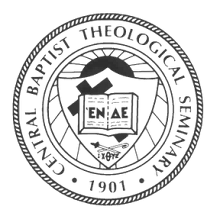The ancient city of Bagan is now a deserted plain, a vast expanse of empty fields dotted with old temples and pagodas. A few isolated villages are still standing, yet the glory of the 11th to 13th centuries has long departed. This was the epoch in which Theravada Buddhism was introduced and began to flourish and is considered, along with the varied arts, the most important legacy of the Bagan period. The varied arts included: brick masonry, stone or marble carving, painting, pottery, and lacquerware—arguably the world’s finest.
The visual landscape is stunning as temple after temple comes into view; it is an open air museum, as our guide put it, a forest of temples. The old saying that you cannot point in any direction without intersecting a temple is palpably true; as far as the eye can see, shrine after shrine rises up—each an expression of its builder’s desire to gain merit.

In former days, people lived next to the temples, but now only the temples remain, surely due to the excellence of their construction—a bit of irony in a faith tradition that eschews any notion of permanence. These temples will pass away, but perhaps not in the way Adoniram Judson imagined. Climbing to the top of a high temple, he proclaimed that one day “a voice mightier than mine…will ere long sweep away every vestige of thy dominion.” Buddhism endures even though the “Christian hymn of praise,” as Judson put it, is sung joyfully in the land. How to continue to bear appropriate contextual witness is part of what we seek to learn.
One of the learning objectives for our pilgrimage is to grow in respect for the lived religions of others. Our time in Bagan granted significant opportunities to observe the reverence with which the faithful encounter these images of the Buddha, the ubiquitous monks, and the devoted practices of adherents of the pathway they follow. Surely they demonstrate a longing for God which is part of our common humanity. We were created for communion with God, to seek after the holy.

As we gathered last evening for a time of worship and reflection, I kept hearing students question where grace is to be found in a religion where fate plays such a prominent role. Also, I observed their struggle with the notion that salvation is utterly dependent upon human action, our merit. It is the key theological issue, in my judgment—how to understand the interface between divine providence and human participation in the work of salvation.
Today we journey to Mandalay, the last seat of the Myanmar royalty and the final home of Burmese independence before colonial rule. Of particular interest to us will be visiting the prison in the Inwa area where Judson was held during the first Anglo-Burmese War from 1824-1826. Last evening Rosalie Hunt, author of Bless God and Take Courage, helped us prepare for this momentous opportunity. We continue to be filled with gratitude for the Christian witness in this land even as we encounter a context where it is such a minor voice.

No comments:
Post a Comment